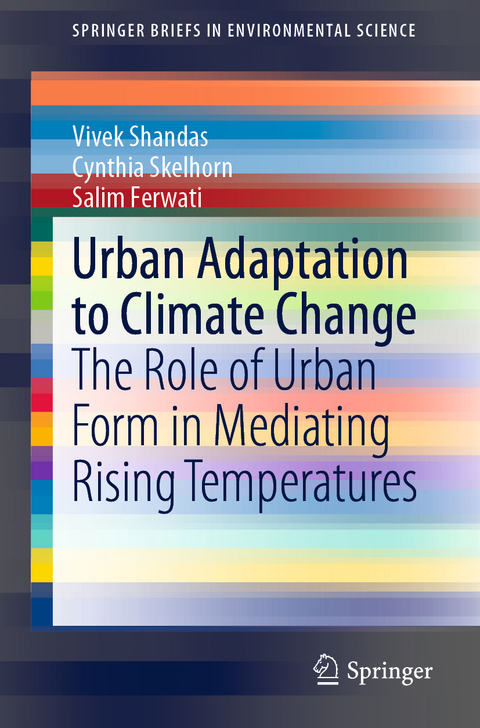
Urban Adaptation to Climate Change
Springer International Publishing (Verlag)
978-3-030-26585-4 (ISBN)
This book presents the findings of a three-year study on urban heat in Doha, Qatar, and discusses guidelines and strategies for planning agencies to consider in the context of moderating temperatures to provide pedestrians with greater access to outdoor spaces and greater choice in modes of transport. If modifying urban form can reduce extreme temperatures in one of the hottest places on the planet, then perhaps other communities can learn how to create livable cities during a time of rapid changes to the climate. In fact, despite the periods of extreme heat, strategic planning and management of urban areas can improve residents' and visitors' ability to live, work, and move throughout the city comfortably.
Doha, Qatar, a city with one of the most extreme climates on earth, has undergone rapid development over the past 40 years. Although cities in the Middle East are expanding at three times the international average (UN Report, 2012), the rapid populationand physical growth remain largely unexamined, particularly in terms of the unique conditions, qualities, and characteristics that give rise to these emerging centres. Speed, quality, and extent of urbanization impact neighbourhood-scale environmental conditions, and this book provides evidence that urban forms and materials can help to mediate temporal variation in microclimates and that landscape modifications can potentially reduce temperatures and increase accessibility to outdoor environments. By applying the lessons in this book, communities around the world can better adapt to the increasing frequency, duration and intensity of extreme heat.
I. Human comfort and livability as environmental challenges in Qatar and the GCC Region.- II. Land use and land cover change in Doha, 1950-2016.- III. Regional and city-scale temperatures.- IV. High temporal resolution monitoring of urban heat and air quality.- V. Urban corridor analyses and findings.- VI. Neighborhood microclimate modeling of landscaping, materials, and building density.- VII. Beyond 2022 - Predictions for long-term growth in Qatar.- VIII. Implications for future planning and development in Qatar and the GCC.- IX. Appendices.
| Erscheinungsdatum | 08.09.2019 |
|---|---|
| Reihe/Serie | SpringerBriefs in Environmental Science |
| Zusatzinfo | XIV, 96 p. 27 illus., 19 illus. in color. |
| Verlagsort | Cham |
| Sprache | englisch |
| Maße | 155 x 235 mm |
| Gewicht | 203 g |
| Themenwelt | Naturwissenschaften ► Biologie ► Ökologie / Naturschutz |
| Naturwissenschaften ► Geowissenschaften ► Meteorologie / Klimatologie | |
| Technik ► Bauwesen | |
| Schlagworte | air pollution and air quality • air quality • climate change • Climate Change Management • Climate in Doha • Climate mediation • livability • Living in extreme heat • Microclimate • temperature mediation • Thermal comfort • Urban Heat Island • urban heat patterns • walkability |
| ISBN-10 | 3-030-26585-4 / 3030265854 |
| ISBN-13 | 978-3-030-26585-4 / 9783030265854 |
| Zustand | Neuware |
| Informationen gemäß Produktsicherheitsverordnung (GPSR) | |
| Haben Sie eine Frage zum Produkt? |
aus dem Bereich


